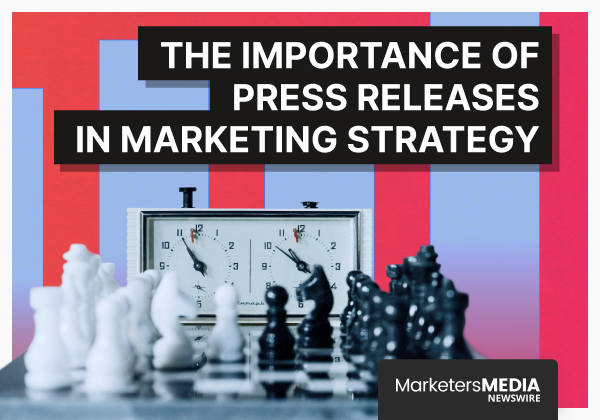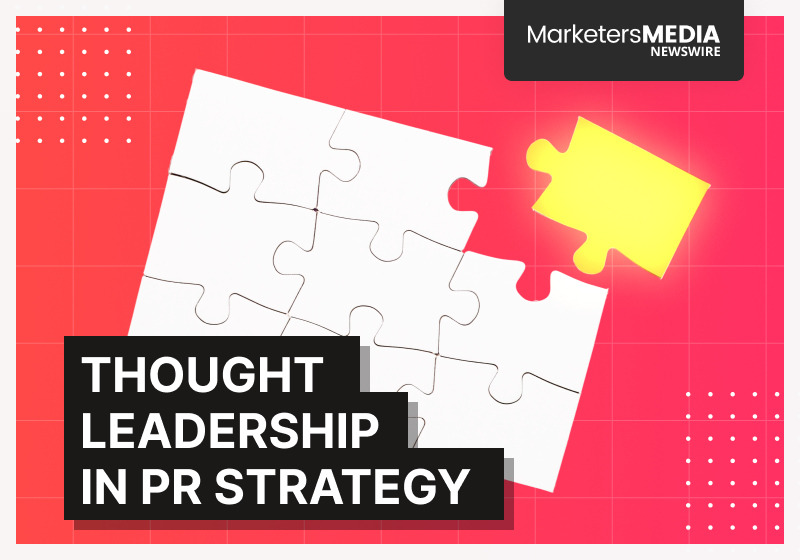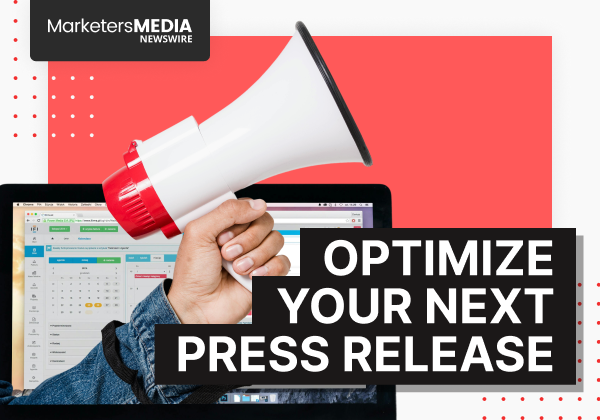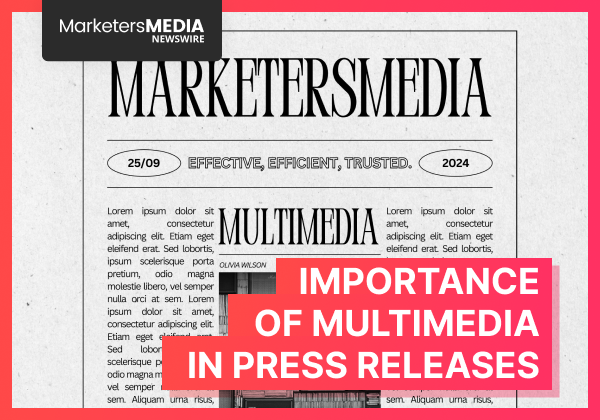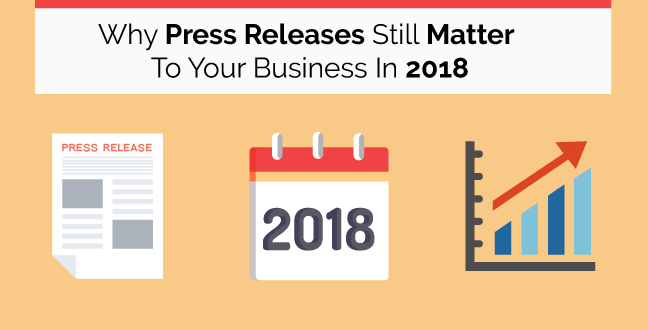Table of Content
- What is a Press Release
- Why Should You Incorporate Press Releases into Your Marketing Strategy?
- How to Develop a Press Release Marketing Strategy?
- When to Use (and Not Use) a Press Release
- Tips for Writing Compelling Press Releases
- Effective Press Release Distribution Strategies
- Measuring Press Release Success
Running a business means ensuring every part of your organization is working smoothly, and marketing is no exception.
You want your brand to stand out, to be seen by the right people, and to have an edge over your competitors. To do that, you need a marketing strategy that works for you—and press releases are a smart way to do just that.
They’re an effective way to broadcast important news and updates, reaching both journalists and prospective customers. By leveraging press releases, you keep your business in the spotlight and in the minds of potential customers.
What is a Press Release
First thing first, let’s clarify the key concept:
A press release is a formal announcement issued by a business, organization, or individual to the media and the public.
Press releases can cover a wide range of topics, including:
- Product launches
- Company milestones
- Partnerships
- Rebranding
- Event announcement, and so on.
To explore more, take a look at these press release examples for various scenarios and how they’re applied.
So the next question is:
Why Should You Incorporate Press Releases into Your Marketing Strategy?
Press releases might seem old-school, but they’re still a powerful marketing tool in today’s marketing world. Here’s why they’re worth your time:
#1 Expand Your Reach
Press releases help you gain wider exposure by distributing your message across various media outlets. Your message will reach new audiences, both locally and globally, potentially reaching thousands or even millions of people you might not have accessed otherwise.
#2 Build Credibility and Authority
When your product gets mentioned on reputable sites like Yahoo! News, it instantly boosts your credibility.
Imagine someone on the fence about buying from you—they see your brand featured on a well-known site, and that can be the deciding factor that makes them trust your business.
#3 Share Targeted Information
A press release lets you get your message to the right crowd. Take DMR News, for example—they’re a tech site that wanted to share their new video news initiative.
By getting their press release featured in Business Insider, they made sure it landed in front of a tech-savvy audience who actually cares about media innovation. It’s all about choosing the right platform to reach the folks who matter most to your business.
And with MarketersMEDIA Newswire, you can easily distribute your press releases to top-tier media platforms including Business Insider, AP News, Barchart, and MSN.
#4 Generate Quality Leads
Good press releases attract attention from people who are genuinely interested in what you offer. If you’re a software company with a new tool, a press release can catch the eye of businesses looking for exactly what you’re selling, turning interest into real leads.
#5 Improve Online Visibility
Press releases aren’t just for print anymore—they can boost your online presence too. When your release is picked up by respected sites, they create backlinks to your site, potentially boosting your SEO efforts and driving more organic traffic.
#6 Strengthen Brand Identity
Consistently sharing news through press releases helps people remember who you are and what you stand for.
If you’re known for sustainability, regular updates about your green initiatives reinforce that image and keep customers coming back.
With these benefits in mind, it’s clear that press releases are a valuable asset in your marketing strategy. But to truly make the most of them, you need a well-thought-out plan.
So, how do you develop a press release marketing strategy that works?
How to Develop a Press Release Marketing Strategy?
#1 Identify Your Target Audience
Before you write a press release, you need to know who you’re speaking to. Consider the following:
- Who is your audience? Are you targeting industry professionals, potential customers, investors, or the general public?
- Demographics: What are the age, gender, location, and income levels of your target audience?
- Interests: What are their interests and pain points that your product or service addresses?
- Media Consumption Habits: Where do they get their news—through blogs, social media, print media, or online publications?
To do so, create detailed audience profiles to guide your strategy. Understanding all these aspects will help you craft a message that resonates with your audience.
#2 Determine the Timing and Frequency
Getting the timing right for your press release is key. Ideally, you want to publish it about one to two weeks before a big launch or event. This gives journalists enough time to pick up the story and lets your audience get excited about what’s coming.
When it comes to how often you should send out press releases, less is more. Don’t flood the media with announcements—focus on releasing press releases only when you’ve got something really newsworthy, like a major product launch or a big company update.
The day and time you choose also matter. Mid-week, like Tuesday to Thursday, tends to be the sweet spot. Mondays can be too busy, and by Friday, people are already thinking about the weekend. Mornings are usually best because it gives journalists the day to work on your story.
Also, think about timing your press releases around key occasions or seasons. For instance, if you’re in retail, announcing a new product line right before the holiday season can create a buzz. Or if you’re in tech, dropping big news around an industry event like CES (Consumer Electronics Show) can give you extra visibility.
By planning out when and how often you send your press releases, you’ll make sure your news hits at just the right time.
#3 Integrate with Broader Marketing Efforts
Your press release strategy shouldn't stand alone—it should be part of a bigger marketing picture. So, think about how your press release fits into your overall strategy.
For example, if you’re announcing a new product, you might tease it on social media a few days before the press release goes out. Then, follow up the press release with a blog post that dives deeper into the product’s features, and send out an email to your subscribers with a special offer. This integrated approach keeps your message cohesive and amplifies your reach.
Now that you’ve got a solid strategy in place, the next step is knowing when to put it into action. Not all news needs a press release, so let’s explore when it’s the right move—and when it might be better to hold off.
When to Use (and Not Use) a Press Release
Creating a consistent schedule for your press releases is key to keeping your brand visible and relevant. Regularly sharing news about your company—whether it’s a product launch, an event, or an award—helps maintain a steady flow of communication with your audience and the media. However, it’s important to be strategic about what you choose to announce.
While press releases are great for major updates, there are situations where they might not be the best option. For example, minor updates like routine internal promotions or small operational changes are better suited for internal communications or a company newsletter. These types of announcements don’t usually grab the attention of a broader audience or the media.
To avoid common pitfalls and ensure your press releases are impactful, it’s worth checking out this blog post on bad press release examples and how to fix them. It offers valuable insights into what to avoid when crafting your press releases.
By being selective and strategic about when to issue a press release, you’ll make sure that your news is always timely, relevant, and worthy of attention.
Tips for Writing Compelling Press Releases
Now that you know when to issue a press release, it’s important to make sure your press releases captures attention and generates buzz.
Here are some tips to help you write compelling press releases that make an impact:
#1 Follow the Standard Press Release Format
Follow a clear structure to make it easy for journalists to find what they need:
- Headline: Start with an attention-grabbing headline that gives a clear idea of what the press release is about.
- Summary: Follow with a brief summary that hooks the reader and highlights the main points.
- Dateline: Include the location and date to give context to your news.
- Body: This is where you dive into the details. Cover the who, what, when, where, why, and how of your announcement.
- Boilerplate: Provide a brief overview of your company or organization, giving readers a snapshot of who you are.
- Contact Information: Finish with contact details so journalists know how to reach you for more information.
#2 Create Attention-Grabbing Headlines
The headline is your chance to make a strong first impression. It needs to be clear, concise, and intriguing enough to make people want to read more.
If you’re looking for tips on writing headlines that get noticed, check out this blog post on how to craft great press release headlines. A strong headline can make all the difference in whether your press release gets noticed or passed over.
#3 Highlight Key Features and Benefits
When you’re writing the content, don’t just list features—explain why they matter. Show how your product, service, or event can solve a problem or improve something for your audience.
For instance, Thomson Hospital Kota Damansara’s press release about the branding of an MRT station didn’t just announce the name change; they highlighted how this change enhances accessibility to healthcare, promotes the use of public transportation, and benefits the local community.
By focusing on these tangible benefits, they made the press release not just informative but also highly relevant to their audience.
#4 Add Call to Action
End your press release with a clear call to action. Whether it’s inviting readers to visit your website, register for an event, or contact you for more information, make sure they know what to do next.
Effective Press Release Distribution Strategies
A well-crafted press release won’t go far without the right distribution. To ensure your press release gets the visibility it deserves, here are some effective strategies to follow:
#1 Optimize for SEO
Optimizing your press release for search engines is essential for increasing its online visibility. Include relevant keywords that your target audience is likely to search for, and don’t forget to add meta descriptions.
These elements help your press release rank higher in search engine results, driving more organic traffic to your content.
#2 Include Multimedia Elements
If possible, add images, videos, or infographics to your press release. Visual content can help make your story more engaging and shareable, and it often gets better coverage in the media.
Example:
#3 Social Media Integration
Leverage your social media platforms to amplify your press release. Share it across your social channels to increase its reach and encourage engagement.
Social media also provides an opportunity to connect directly with journalists, influencers, and potential customers who may be interested in your news.
#4 Utilize Distribution Services
Consider using a press release distribution service like MarketersMEDIA Newswire. These services help you reach a broad network of media outlets, saving you time and effort while maximizing your reach.
Instead of manually sending your press release to multiple platforms, a distribution service can handle the process for you, ensuring your news is picked up by relevant publications and outlets. This is particularly useful if you're aiming to broaden your audience or tap into specific markets.
Measuring Press Release Success
After distributing your press release, it’s important to measure how well it performed. You should:
#1 Track Media Pickups
The first sign of success is seeing your press release picked up by media outlets. Monitor which publications or websites feature your story. This will give you a sense of how widely your news has been distributed and which outlets found your press release newsworthy.
#2 Analyze Website Traffic and Search Performance
Use tools like Google Analytics and Google Search Console to see how well your press release is doing online. There are two things you’ll want to keep an eye on:
- Traffic from Your Links: Check if more people are visiting your website through the links in your press release. An uptick in traffic is a good sign that your press release is engaging readers and driving them to your site.
- How People Find You: Look at the keywords people used to find your press release on search engines. This tells you if your press release is showing up in search results and if it’s grabbing attention.
By focusing on these, you’ll get a good sense of how your press release is performing and where you might need to tweak things next time.
#3 Measure Lead Generation
A key goal of many press releases is to generate leads. Track the number of inquiries, sign-ups, or downloads that result from your press release. If you included a call to action, such as an invitation to register for a webinar or download a white paper, measure how many people took that action.
#4 Gather Feedback for Continuous Improvement
Gather insights from your audience, media contacts, or internal team to see what worked well and what could be improved.
Did readers find the content engaging? Were there any areas that lacked clarity? Use this feedback to refine your strategy and make your next press release even more effective.
Ready to Strengthen Your Press Release Marketing?
Now that you’re equipped with the tools and strategies for effective press release marketing, it’s time to put them into practice.
Whether you’re announcing a partnership, a financial announcement, or just boosting your brand’s visibility, a well-executed press release can make a big impact.
If you need any extra support or just want to make sure you’re on the right track, MarketersMEDIA Newswire is here to help. We offer a range of services to assist with everything from writing to distribution, helping you reach the right audience with the right message.
Have questions or need guidance? We’re here to support you in your press release marketing journey.
Free Press Release Template
Tell us where to send your PDF:
